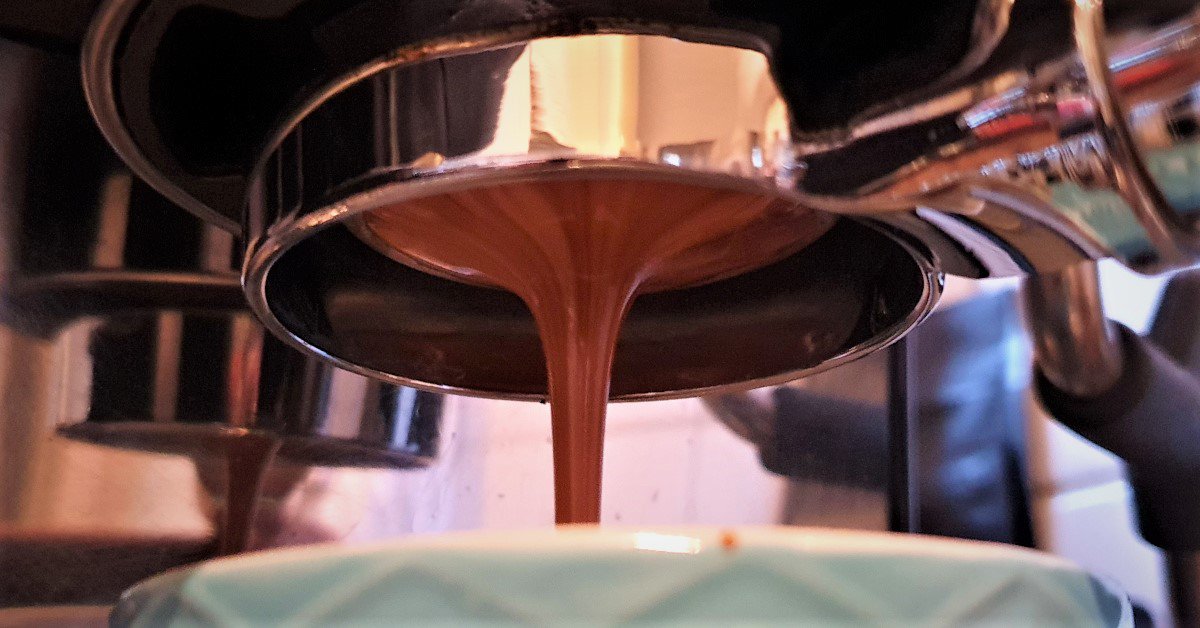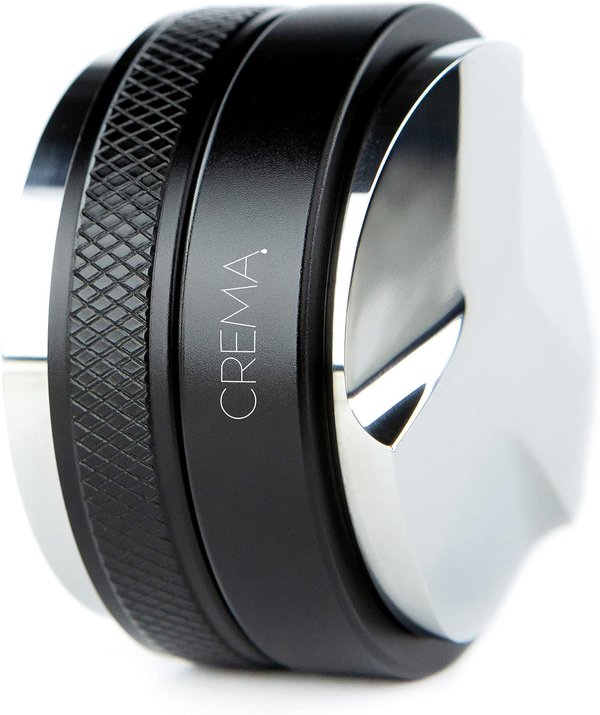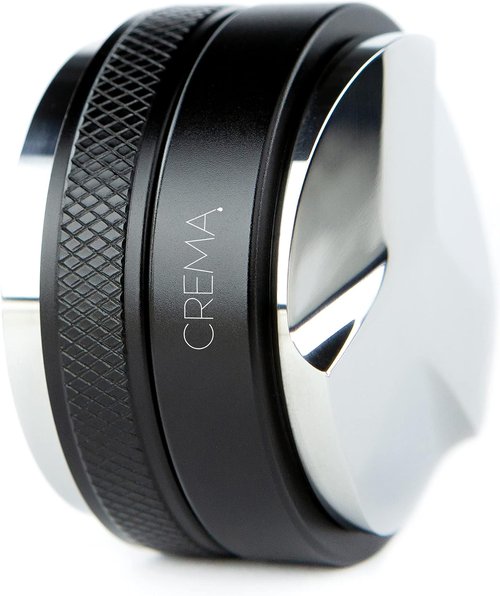How to Make Perfect Espresso with a Portafilter Espresso Machine

Does anyone say that a good espresso is impossible at home? Not at all! If you have the right equipment, you can brew a perfect espresso at home just as easily as a filter coffee with the V60. In this guide, we reveal how to get a perfectly extracted espresso out of your portafilter equipped espresso machine. So bring on the beans, the grinder, the tamper, and get to work!
Step 1: Preheat Portafilter
The purpose of heating up the machine is not only to bring the water up to temperature, but also to bring all water-carrying components up to temperature. If you only heat up the water boiler, you risk the amount of water needed for espresso cooling down on its way through the metal portafilter. The coffee grounds would be extracted with water that is too cold, resulting in a sour espresso. This is why the warm-up phase is so important.
Step 2: Preheat cups
In cold cups, the espresso just pulled gets cold faster. This intermediate step is optional. However, for a complete taste experience, it is highly recommended to preheat the cups as well as the machine.
Modern portafilter coffee machines often have a plate on the top of the machine specifically for this purpose. There you can warm up the espresso cups during the preparation time. Alternatively, a shot of hot water is sufficient to bring the cups up to the right temperature.
Traditionally, a blend that contains both Arabica and Robusta is used to make an espresso. This is because the robusta varieties are commonly responsible for giving an espresso from its distinctive golden-brown crema. It is not uncommon for traditional espresso blends to have a robusta content of around 50%. If you want to be sure of obtaining a beautiful crema on your espresso, you should start with a traditional blend. Later on, you can always try out other mixtures.
However, single-origin Arabica espresso is also on the rise. It does not contain too much bitterness, so the espresso tastes milder and fruitier than the usual blend. And with a bit of practice, a 100% Arabica coffee can also develop a sturdy crema.
Step 3: Grind Beans
Classically, 8 grams of ground coffee per shot are assumed for a good espresso. In the meantime, however, the trend is moving toward 10-12 grams of ground coffee for a single-shot espresso.
You can weigh out the right amount with a precision scale to be absolutely sure - or if you are still tinkering with the optimal recipe. In any case, it is more practical to grind the beans directly into the portafilter basket.
Tip: The beans should be very finely ground. The right amount of beans for an espresso depends on how many coffees you make at the same time, or how many shots you want to pull (single-shot portafilter basket, double-shot basket, triple and so on).
Step 4: Level the Grounds
Once the espresso grounds are in the filter basket, they should be leveled. This means simply that the powder should have a flat surface.
Attention. In this step, it is not yet a matter of applying pressure to the powder to press it on. It is merely a matter of spreading the coffee grounds smoothly. This can be done with the aid of a finger, by tapping the portafilter once or twice on the work surface or tamper mat, or with a specially created tool, the espresso leveler, also called dozer or espresso distributor.
Tip: The edge of the basket and the portafilter must be free of any remaining coffee particles. Otherwise, the sealing between the brew group and portafilter will not close properly and the coffee will spatter out everywhere.
Leveling creates the best conditions for correct tamping during the next step. It distributes the coffee grounds evenly in the filter. This prevents channeling, which causes poor extraction and thus unbalanced taste.
Crema 53.3mm Coffee Leveler & Hand Tamper
Crema's 53.3mm Coffee Distributor/Leveler & Hand Tamper, made of durable stainless steel, provides consistent coffee distribution and tamping. It's reliable and designed to fit 54mm Breville/Sage portafilters. Available in different sizes to fit your machine.
Step 5: Proper Tamping
Espresso experts and baristas agree: tamping is an often underestimated aspect of espresso preparation. Leveled and tamped grounds are called an espresso puck. So, only when uniform pressure is applied to the previously properly leveled grounds will the espresso puck be equally dense at all points. This is another factor that contributes to even extraction and, eventually, to the taste.
Tip: Usually, a tamp pressure of around 15 kilos is recommended for espresso preparation in the espresso machine.
When pulling espresso from a manual espresso machine, the tamping pressure can be less. This allows the piston of the lever espresso machine to draw air through the tamped espresso grounds (the puck) when the lever is lifted. Nevertheless, each bean behaves differently. If you can't get a consistent extraction with about 15kg, feel free to tamp a little less or a little more. What is more important than the correct pressure is always to tamp at about the same strength. As long as you weigh the coffee beans and do not change the grind size, the tamper pressure is the third key factor that ensures reproducible results.
To be able to create this even pressure, you need the right utensil, the tamper. A stamp-shaped object made of stainless steel, with a diameter that matches that of the filter basket, it is also called an espresso tamper or just coffee tamper. The most common term, however, is just - tamper.
Step 6: Flushing
Flushing serves several purposes in the preparation of espresso in an espresso machine. It can either speed up the machine's warm-up phase because water flows through all pipes and parts. Or it can flush excessively heated water out of the system so that the correctly tempered water can flow in (cooling flush). Finally, it can also be used to drain stale water.
Tip: If you pull your espresso using a dual boiler espresso machine, you may skip this step.
In the end, flushing is nothing more than a short draw of water without the portafilter being inserted at that time.
Step 7: Insert portafilter & pull espresso
Before pulling an espresso, the portafilter must be inserted into the machine. But not before the last drop of water falls after the flush. Done? Start the extraction. The extraction time for a shot of espresso (single shot) is 25 seconds, or up to 35 seconds maximum.
Tip: For those who have a poor sense of time, just watch the color of your espresso. As soon as it becomes pale, you should stop brewing. From that moment on, the ratio of water to coffee is no longer correct and the espresso becomes thin.
Step 8: Swirl the Cup and Enjoy
Before bringing the cup to the mouth in joyful anticipation, there is one last, short step:
If you swirl the cup briefly or stir the espresso for a second before drinking, you blend all the flavors that have been extracted at different intervals and can create an even more balanced taste result.
Bottomless Portafilter
And finally, some words on bottomless portafilter. If you have the choice between a bottomless and a normal portafilter, we recommend to always opt for the bottomless one. In our experience, this has a significant advantage:
With a bottomless portafilter, all settings can be adjusted very precisely. This is especially important if you are experimenting as it allows the extraction to be monitored accurately and makes it easier to identify possible sources of error when preparing espresso using an espresso machine with portafilter. If a setting is not correct, the coffee literally sprays out of the filter.
A standard portafilter tolerates such errors and compensates them because the spout ensures the desired, constant flow of extracted coffee. The "splashing", so to speak, is hidden inside the portafilter. This means, of course, that it can also produce unwanted surprises in the cup, and you will be able to tell whether the espresso has been extracted correctly or incorrectly only when you taste it.

